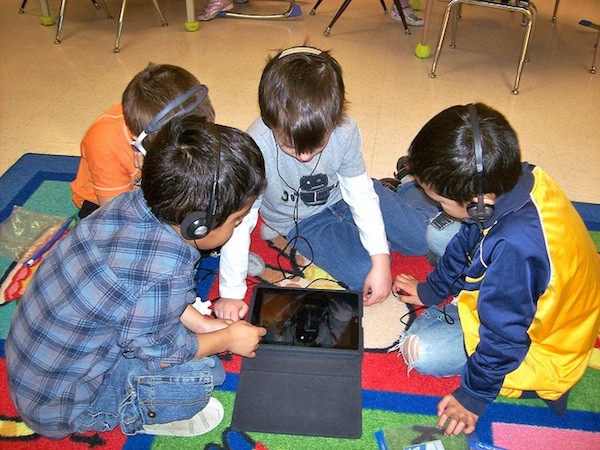Social Reading and the Foundations of Digital Literacy

Not long ago, I was on an airplane waiting for takeoff. Due to the completely reasonable FAA restrictions on using electronic devices, I was reading the print version of a magazine while we waited to taxi to the runway. I soon found I was absorbed in the content of the article, and, when a passage caught my eye, I reflexively tapped the page with my index finger in an attempt to highlight the passage, just as I would have done when reading on my tablet computer.
Of course, I quickly realized that print does not work that way, and luckily no one noticed my gaffe. Yet, my readingFAIL is illustrative of the way that digital technologies and digital networking have changed my reading habits. In short, my most important reading is social. If I had been reading on my tablet, I would have highlighted the passage and shared it and the link to the story on either my Facebook or Twitter accounts, or both. But, as it was, I kept reading, and I didn't share the story. This meant I did not have a record of the link or the interesting passage, nor did I have any enlightening discussions with my friends and followers about the story. No record, no notes, no conversation: it was pleasure reading at its most basic, simply killing time until we hit 10,000 feet and I could get back to work.
Of course, most of us first experience reading as a social activity. Whether having stories read to us as children or the collective reading that characterizes early reading instruction, reading begins as a social experience. It is only as we grow older that reading becomes a private, individual activity, one often divorced from contact with others. There are certainly many avenues of social reading that exist prior to digital networking—book clubs come immediately to mind—but the pervasive nature of digital technologies has the potential to transform all of our reading into a social experience.
So, what is social reading exactly? It is reading that is defined by the act of sharing the reading experience within a community and that is subsequently shaped and informed by that community. The community in question could be as small as two people or as large as a country; it could be grounded in a physical location, or exist wholly online.
One of the reasons I believe it is important for us to highlight social reading is that, because students experience reading as a social activity from a young age, it can be an effective means of scaffolding those students' experiences with other forms of social learning. One of the saddest revelations in Brandt's Literacy in American Lives is that while reading is widely encouraged and supported—by families and schools—among the people she interviews, writing is seen as a source of secrecy and shame, and most of those interviewees who did write went out of their way to keep this fact hidden from their families and friends. The ways in which digital technologies foreground the social features of communication serve as a concrete means of demonstrating the inherently social nature of learning for our students, and helps socialize them in a society that values this community behavior as one of the foundations for media literacy.
Banner image credit: Kathy Cassidy http://www.flickr.com/photos/57634636@N00/6422103515/